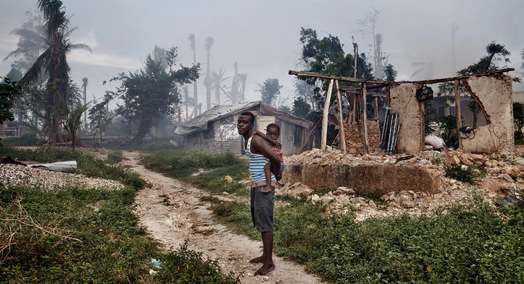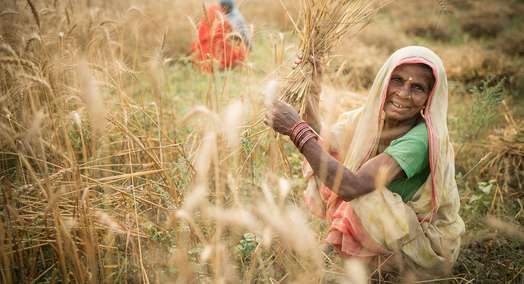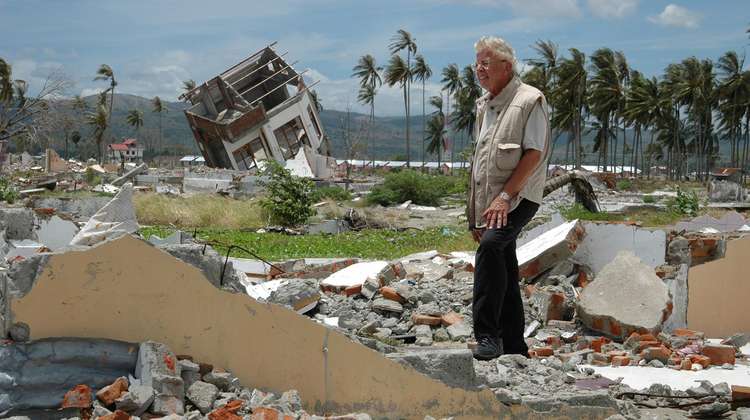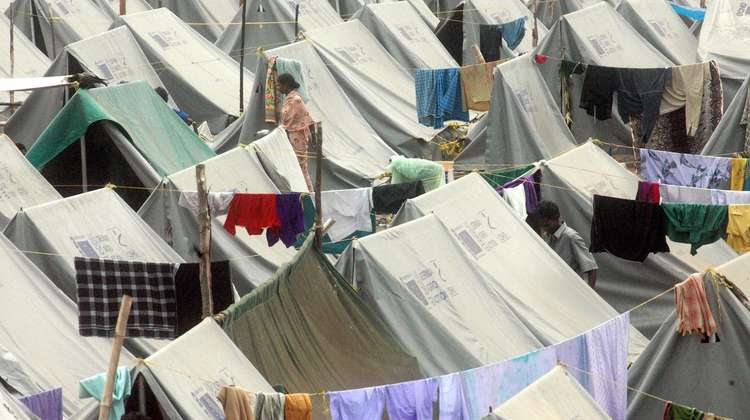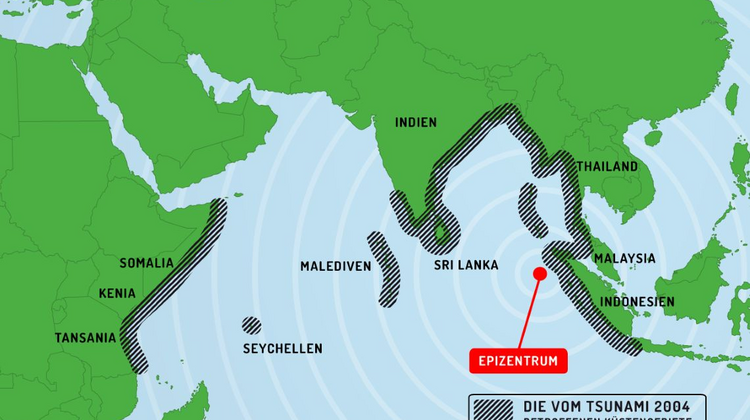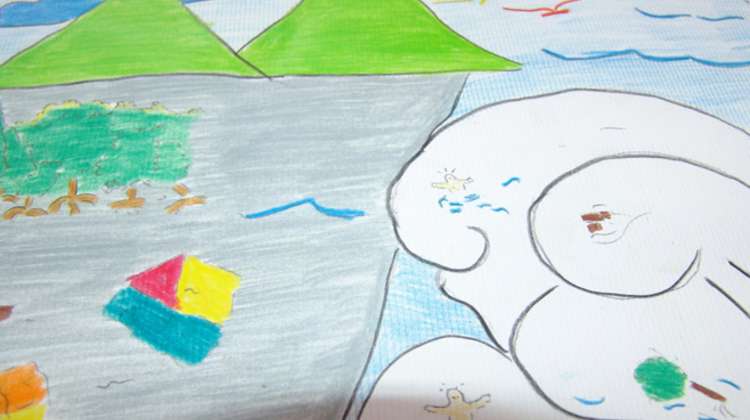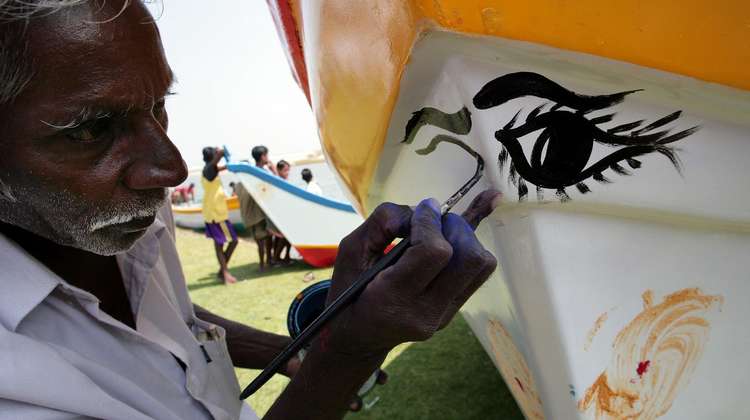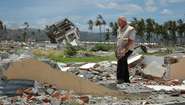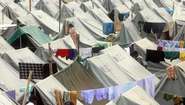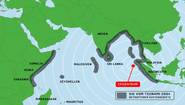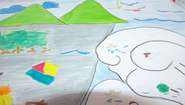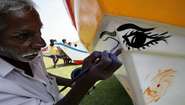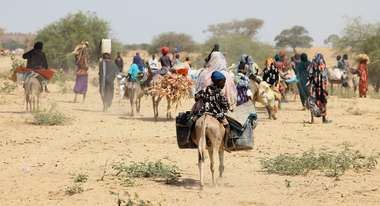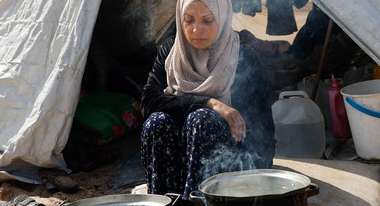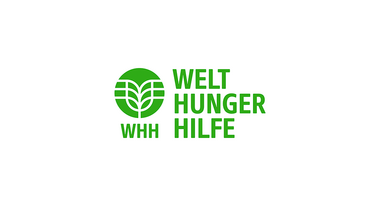The 2004 Tsunami – A Shock for the World
It is ten years ago now that a tsunami erased whole coastal areas of Asia and claimed the lives of 230,000 people.
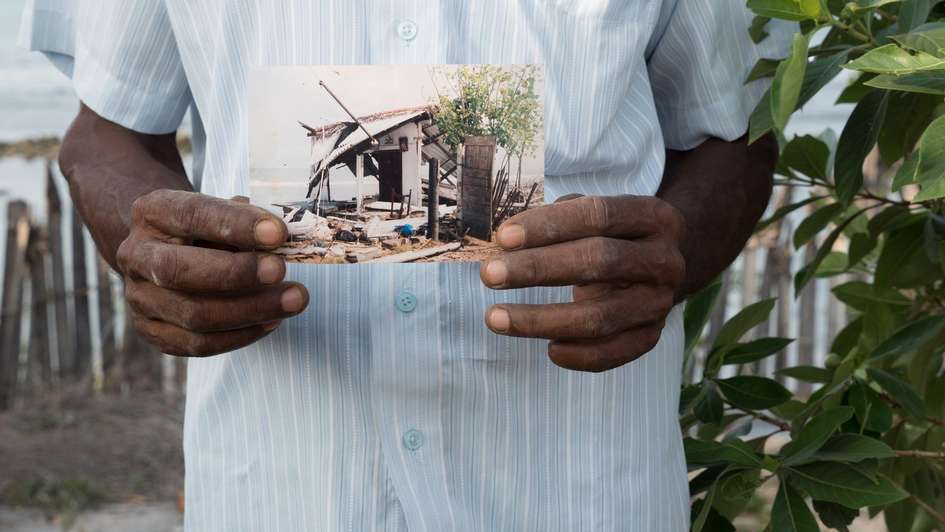
On 26th December 2004, the world learned the Japanese word ‘tsunami’, translated as ‘harbour wave’: After a marine earthquake in the Indian Ocean, within minutes seismic waves had spread out, arriving onshore at heights of up to 40 metres. According to official figures, more than 230,000 people died and 1.7 million became homeless.
2004 tsunami - facts
The quake off the north-west coast of Sumatra had a strength of 9.1 on the Richter scale and was the third strongest marine quake ever measured.
The worst affected areas were the coastal regions of India, Indonesia, Thailand, Somalia and the Maldives.
The victims of the tsunami needed fast and effective aid
Just a few hours after the first giant waves hit coastal areas, Welthungerhilfe employees from our projects in the affected regions in India, Sri Lanka and Indonesia started on the preparation of emergency aid. 24 hours later, members of the Welthungerhilfe emergency response team from Bonn were on the ground.
Our immediate and long-term support (2004 - 2009)
After the tsunami we provided fast emergency aid. In India, Sri Lanka, Indonesia and Thailand we intially supplied 180,000 people with basic essentials: food, clothes and tents. A few months later, together with the victims of the natural disaster and local partners, we started on the reconstruction of their country.
Examples of our help for self-help:
- India: Fishermen received new nets and boats, in order to be able to go back to work more quickly. Houses, an orphanage and a temporary school for children were built.
- Sri Lanka: Before the construction of permanent houses, 2500 temporary houses were erected. New schools, health facilities, as well as livelihood opportunities in trades and agriculture helped with the new start.
- Indonesia: Village residents were supported with houses, roads and waterworks. Farmers received seeds and tools so that they could carry out agriculture again.
- Thailand: Fishermen received equipment and children received support to overcome their nightmares and fears. Educators led 100 schools on two ships.
Our experience shows: Combating and preventing disasters functions most effectively through a combination of acute emergency aid and long-term development cooperation. In carrying out reconstruction we, therefore, take into consideration future security against disasters, for example, through the building of earthquake-proof houses or through the reforestation of mangrove forests for better coastal preservation.
